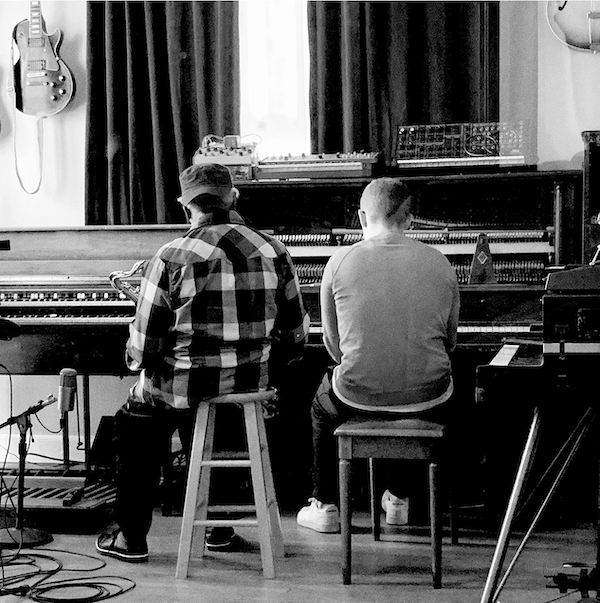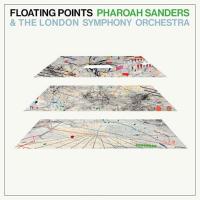Floating Points, Pharoah Sanders & The LSO Offer Promises And Keep Them
Each of these arpeggiated “heart beats” (or organic breaths) glides into a long decay produced by an engaged sustain pedal that Shepherd eventually releases, each time with a soft, physically present “clunk”— if your system goes sufficiently low. The suspension produced by the seemingly empty spaces between the repetitive mystical glistens are compositionally important.
As the 46 minute piece progresses, built upon two alternating chords, variations shift the dynamics, the first of which is the LSO string section serenely entering in the background and giving the vertically bubbling piece some drama and forward motion. Later, there’s a short section that sounds like synth-modulated vocal gurgles and further out a series of low synth blasts that sound like fog horns and higher pitched Cetacean-like calls.
Only occasionally does the listener lose the piece’s calming “heartbeat”. Its resumption produces assurance and a feeling of continuity and security. Only once—at around 3 minutes into the 5th movement—does Sanders begin to display his full power.

The orchestra strongly asserts itself late in the continuous piece as massed strings dramatically and somewhat surprisingly swirl, swelling at one point like the ‘sunrise’ on The Moody Blues’ Days of Future Past. Later there’s an impressionist Debussy-like surge followed by what sounds almost like a music cue lifted from a Technicolor ‘50s western. In the 6th movement the massed strings erupt and have their final strong say.
Then as suddenly as this conflicted eruption emerges—the only flashpoint in a soothing deliberate piece—it fades, allowing the main arpeggiated motif to reassert itself.
Towards the work’s conclusion there are hints of mid’70s retro-synth. At one point I was reconnected with gurgly/squiggly “jury-rigged” ARP 2500 sounds I’d first heard on a shlock-synth Elektra album called Intergallactic Trot (EKS-75058) by Stardrive With Robert Mason (among the players were drummer Steve Gadd and saxophonist Michael Brecker). I used to sneak “spacey” sections of it into radio commercials. But I digress!
The 46 minute piece never fully resolves. It just sort of ends, which ultimately proved a smart strategy. This is a record you can play repeatedly and got lost every time in its magic. I’ve been playing an RTI test pressing sent to me at the end of December by a friend of Shepherd’s and remain mesmerized with every play by the mostly dreamy, meditative music and the pristine sound, including Sanders’ sax, which floats serenely between the speakers. The massed strings can sound a bit aggressive, but I suspect that’s the idea.
Promises was officially released a few days ago so I streamed it on both Qobuz and Tidal, where it’s available on both services as 44.1kHz/24 bit FLAC streams. Firstly, having acclimated to the vinyl, hearing either stream was disappointing, but especially the Qobuz stream. Often (but not always), the Qobuz stream bests the Tidal stream when Tidal isn’t an MQA file but this time the Tidal stream was fuller, sweeter and more expansive, like the vinyl, but still not quite as “wall-to-wall” or enveloping. If “digital is digital”, what happened? Whatever it was, get the vinyl! (Available on both standard weight and 180 grams, April 2, 2021, both with gatefold, die cut jacket)




